Table of Contents
Wave – Vou Te Contar Jobim sheet music (guitar)

TOM JOBIM
Brazilian songwriter and vocalist Antonio Carlos Jobim (1927–1994) was one of the creators of the subtle, whispery, jazz-influenced popular song style known as bossa nova. He has been widely acclaimed as one of Brazil’s greatest and most innovative musicians of the twentieth century.
Jobim’s place in the annals of popular music was secured by a single hit song, “The Girl from Ipanema” (1964), which he co-wrote with lyricist Vinícius de Moraes. His creative contributions to jazz, however, went much deeper; many of his songs became jazz standards, and, in the words of Richard S. Ginell of the All Music Guide , “Every other set” performed in jazz clubs “seems to contain at least one bossa nova.”
Jobim was sometimes called the George Gershwin of Brazil, not so much because of any musical or lyric similarity—Jobim’s songs tended to have oblique, often poetic lyrics quite unlike the clever romantic rhymes of George Gershwin’s brother Ira—but because his music became the bedrock for the work of jazz musicians for decades after its creation.
Studied with German Music Teacher
Antonio Carlos Brasileiro de Almeida Jobim, often known by the nickname Tom, was born in Rio de Janeiro on January 25, 1927. He grew up in the seaside southern Rio suburb of Ipanema, later the setting for his most famous song, and many of his compositions reflected Brazil’s lush natural world in one way or another. Both of Jobim’s parents were educators, and his father, Jorge Jobim, was also active as a diplomat.
But Jobim took after an uncle who played classical guitar, and he soon showed unusual talent of his own. Jobim’s mother, Nilza, rented a piano for the family home, and when Jobim was 14 he began piano lessons with Hans Joachim Koellrutter, a local music scholar of German background who favored the latest experimental trends in European classical music.
Please, subscribe to our Library.
If you are already a subscriber, please, check our NEW SCORES’ page every month for new sheet music. THANK YOU!
Jobim would later point to the influence exerted by French Impressionist composers Claude Debussy and Maurice Ravel on his own music, but a new set of influences was on its way to Brazil in the form of American jazz. Jobim enrolled in architecture school, lasted less than a year, and worked as an assistant to a local architect in the early 1940s.
His real energies were directed toward music, as he gained experience playing piano in small nightclubs known as inferninhos , or little infernos. Visits to Rio by the Duke Ellington Orchestra and other American jazz bands shaped Jobim’s own attempts at composition (which he buried in a drawer at first) and inspired him to settle on a musical career. In 1949 he married his first wife, Thereza Hermanny; they raised a son, Paulo, and a daughter, Elisabeth.

With his well-rounded musical education, by the early 1950s Jobim was able to graduate from Rio’s bars to staff arranging positions with the Continental and Odeon record labels. At this point Jobim was working in the genre of samba, Brazil’s national pop song style, and he sometimes performed his own samba compositions.
His real breakthrough came about in 1956, as the result of a chance meeting two years earlier with Brazilian playwright Vinícius de Moraes. Moraes was working on a play called Orfeu da Conceicção , which was later filmed as Orfeu Negro (Black Orpheus). The play and film transferred the classic Greek myth of Orpheus and Eurydice to modern-day Rio de Janeiro, and Moraes suggested that Jobim write the music for it.
The film Orfeu Negro became an international success, and Jobim’s score, featuring guitarist Luiz Bonfá, kicked off a new musical craze that quickly spread beyond Brazil. It was based in samba rhythms, but it featured subtle harmonic shadings drawn from jazz.
The new style was given the name bossa nova, meaning “new wave,” and the 1958 single “Chega de Saudade” (No More Blues), with music by Jobim, words by Moraes, and guitar by future Brazilian pop star João Gilberto, was the style’s first major hit. Both “Chega de Saudade” and the flip side of the original single, Jobim’s composition “Desafinado” (Out of Tune), have remained jazz standards.
Performed in New York
Jobim’s star rose quickly in Brazil after the release of “Chega de Saudade.” He continued to record with Gilberto, began hosting a weekly television show called O Bom Tom , and wrote music in which he drew on his classical background for the soundtrack to a film called Por Toda a Minha Vida and (with Moraes) Brasîlia, Sinfonia da Alvorada , a four-movement orchestral work with text.
By 1962 American jazz musicians had begun to immerse themselves in bossa nova. Jobim sang his “Samba de uma nota só” (One-Note Samba) on an album by Gilberto and jazz flutist Herbie Mann. The bossa nova phenomenon reached the United States as saxophonist Stan Getz and guitarist Charlie Byrd recorded their successful Jazz Samba album, and in November of 1962 Jobim and other Brazilian musicians performed a major bossa nova concert at New York’s Carnegie Hall. The show was the idea of a Brazilian diplomat who wanted to promote the country’s musical accomplishments abroad.
Best Sheet Music download from our Library.
The concert initially seemed to be a flop. The Brazilian players were thrown off their stride by New York’s miserable late fall weather, and critics panned the show. Jobim and his compatriots also took criticism from Brazilian observers who felt they were diluting Brazilian music by singing songs in English—Jobim, who spoke several languages, sometimes translated his own songs from Portuguese into English, while others were translated by jazz writer Gene Lees. Nevertheless, the Carnegie Hall concert succeeded in exposing Jobim to American musicians and music industry figures.

Jobim recognized the importance of American exposure in broadening the reach of his music, and he quipped that if he had remained in Brazil, he would still just be drinking beer in Rio’s corner bars. In 1963 he made his U.S. recording debut on the Verve label with The Composer of Desafinado Plays.
Jobim followed up that release with several more albums in a smooth jazz vein. He collaborated with one of his most influential American admirers on a successful 1966 release, Francis Albert Sinatra & Antonio Carlos Jobim , which was seldom if ever out of print during the next four decades. Jobim sang, played piano, and occasionally strummed a guitar on these recordings, often backed by a small orchestra.
In 1962 Jobim composed a song that was soon to become a worldwide phenomenon, and in the process he added a phrase to the international lexicon. “The Girl from Ipanema” (in Portuguese, “Garota de Ipanema”) was written as Jobim and Moraes were sitting at a table in a bar in Jobim’s hometown of Ipanema and became infatuated with a passer-by, the “tall and tan and young and lovely” woman described in the song. With a vocal by Gilberto’s wife, Astrud, and a verse of English lyrics, the song became a number-two hit in the United States in 1964, eclipsed only by the Beatles’ “A Hard Day’s Night.”
Jobim prospered, although he was never canny about the music publishing deals he signed, and he often failed to receive a proper share of the money his songs earned.
Jobim’s total output of albums was not large (he recorded ten solo albums, plus nine more with collaborators), but his music remained consistently successful through much of the 1960s.
Nothing else became a hit on the scale of “The Girl from Ipanema,” but such songs as “Wave,” “Insensatez” (How Insensitive), and “Meditation,” with vocals by Jobim himself, Astrud Gilberto, or other singers, became part of the record collections of many sophisticates, and were internalized by jazz musicians as quickly as they appeared. Jobim maintained a strong following in Brazil, thanks to duets recorded with female vocalist Elis Regina, and his 1968 album A Certain Mr. Jobim reached the top 15 on Billboard magazine’s jazz sales chart in the United States.
Branched Out Beyond Bossa Nova
Jobim’s popularity dipped in the 1970s as bossa nova finally ran out of steam commercially, but he never really slowed down creatively. One of his most widely covered songs of the decade was 1972’s “Aguas de Março,” which Jobim himself translated into English (with added lyrics) as “Waters of March”; the English version almost completely avoided words with roots in Romance languages (such as Portuguese) in favor of those of Germanic origin. The lyrics consisted of a seemingly disconnected series of images that suggested the impermanence of life.
The influential jazz critic Leonard Feather, according to Mark Holston of Americas , placed “Waters of March” “among the top ten songs of all time.” Jobim recorded with Brazilian-born arranger Eumir Deodato on his Stone Flower album of 1970, and he also often worked with German-born arranger Claus Ogerman. Jobim’s 1975 album Urubu (meaning “The Vulture”) reflected his personal fascination with that bird of prey.
In 1976 Jobim met 19-year-old photographer Ana Beatriz Lontra; the pair had a son, João Francisco, in 1979, married in 1986, and had a daughter, Maria Luiza Helena, in 1987. In the late 1970s Jobim was active mostly in film soundtracks, but in 1984 he assembled his Nova Banda or New Band, with his son Paulo on guitar, and began touring once again.
His concerts in the United States in the mid-1980s were in venues with the highest profiles: Carnegie Hall and Avery Fisher Hall in New York, and Constitution Hall in Washington. His 1987 release Passarim was as well received in the jazz community as any of his 1960s releases had been, and selections from it appeared on several posthumous collections of his work.
Critics by this time recognized Jobim as a living legend, and he received various awards of national and international scope in the last years of his life. These included the Diploma of Honor, the highest arts award given by the Organization of American States, which he received in 1988, and induction into the Songwriters’ Hall of Fame in 1991.
Jobim never rested on his laurels, and he entered the mid-1990s with a full plate of creative projects. He worked with classical conductor Ettore Stratta in preparing recordings of some of his more classical-oriented works, and he planned to record an album with opera star Kathleen Battle. In 1994 Jobim released a new album, Antonio Brasileiro , and rejoined Frank Sinatra for a track on Sinatra’s Duets II release.
With these career capstones in the works, it came as a shock for Jobim’s admirers in both the United States and Brazil when Jobim died suddenly of heart failure at New York’s Mount Sinai Hospital on December 8, 1994, shortly after entering the facility for treatment of cardiac disease. Jobim’s body was returned to Brazil, where a funeral parade held in his honor in Rio de Janeiro lasted for four hours, and he was buried in a tomb near that of Vinícius de Moraes, who had died in 1980.
The pair had created two of the icons of twentieth-century culture, Black Orpheus and “The Girl from Ipanema,” and the music that came from Jobim’s pen lent the music of much of the century’s second half a distinct Brazilian tinge.
Browse in the Library:
| Artist or Composer / Score name | Cover | List of Contents |
|---|---|---|
| Tchaikovsky Symphony n. 6 Op. 76 (paino solo arr. by Pachulski) |
 |
|
| Tchaikovsky Symphony No. 6 4th Movement (Piano Solo) (Musescore File).mscz | ||
| Tchaikovsky The Man And His Music David Brown Book |
 |
|
| Tchaikovsky Waltz Of The Flowers From The Nutcracker (Piano 4 Hands) (Musescore File).mscz | ||
| Tchaikovsky-Vedernikov Symphony No 6 ”Pathetique” In B Minor Op 74 (Arranged For Piano) | Tchaikovsky-Vedernikov Symphony No 6 | |
| Tchaikovsky, Guide to the practical study of Harmony (1900) |
 |
|
| Teach Yourself Rock Piano (Professional Know-How) |
 |
|
| Teach Yourself Visually Piano (Mary Sue Taylor, Tere Stouffer) Sheet Music |
 |
Teach Yourself Visually Piano (Mary Sue Taylor, Tere Stouffer) Sheet Music |
| Teardrops (Gabriel Thorn) | ||
| Tears For Fears – Head Over Heels | ||
| Tears For Fears – Mad World | ||
| Tears For Fears Tears Roll Down Greatest Hits 82 92 |
 |
Tears For Fears Tears Roll Down Greatest Hits 82 92 |
| Technic Is Fun Book 1 Late Elementary By David Hirschberg |
 |
Technic Is Fun Book 1 Late Elementary By David Hirschberg |
| Techniques Of Improvisation 1 by David Baker |
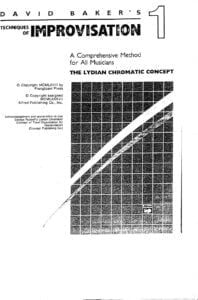 |
|
| Ted Gioia The Jazz Standards A Guide To The Repertoire |
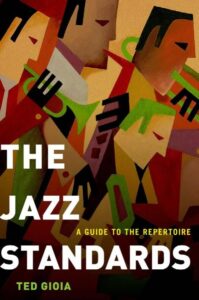 |
|
| Ted Greene My Funny Valentine Guitar Tablatur TABs |
 |
|
| Teddy Wilson 19 Selected Piano Solo Transcriptions |
 |
Teddy Wilson piano solo transcriptions |
| Teddy Wilson Collection 12 Transcriptions |
 |
Teddy Wilson Collection 12 Transcriptions |
| Teddy Wilson Piano Creations Of Standards Songs |
 |
Teddy Wilson Piano songbook |
| Teddy Wilson Piano Patterns |
 |
Teddy Wilson Piano Patterns |
| Tema di Ada (Novecento OST) Ennio Morricone | ||
| Tema di Elisa (Elisa di Rivombrosa OST) Savio Riccardi | ||
| Tema di Francesca – La moglie più bella OST (Ennio Morricone) | ||
| Temptations – My Girl | ||
| Tenderness In The Air – From Final Fantasy V By Nobuo Uematsu (Musescore File).mscz | ||
| Tendre Marie-Charlotte – L’incorrigible OST (Georges Delerue) | ||
| Tenero abbraccio – Elisa di Rivombrosa OST (Savio Riccardi) | ||
| Tennessee Whiskey By Linda Hargrove and Dean Dillon Piano Vocal Guitar Chords |
 |
|
| Tenor Saxophone 20 Jazz Etudes Vol 1 Tenor by Gregory B. Taylor Jr. |
 |
|
| Teoria Musical – Contrapunto – Alan Belkin (Spanish-Español) | Book Theory | |
| Teoria Musical Para Dummies + MP3 (Spanish-Español) Michael Pilhofer-Holly Day |
 |
|
| Teoria Musical y Armonía Moderna Vol 2 (Enric Herrera) Español – Spanish |
 |
|
| Teoria Musical y Armonia Moderna Vol.1 Enric Herrera (Español – Spanish) |
 |
|
| Terence Snider – Take Five (by Paul Desmond) transcription |
 |
|
| Terrence Shider – Wave (Jobim) Sheet Music transcription | Terrence Shider – Wave (Jobim) Sheet Music transcription | |
| Terry Burrows – How To Read Music (with audio MP3) |
 |
Terry Burrows – How To Read Music |
| Terry Scott Taylor Klaymen’s Theme | Terry Scott Taylor Klaymen’s Theme | |
| Tete Montoliu – Au Privave |
 |
|
| Tete Montoliu – Feelings (Morris Albert) |
 |
Tete Montoliu Feelings |
| Tete Montoliu – Feelings – My Way – Au Privave compilation |
 |
|
| Tete Montoliu – It Never Entered My Mind |
 |
|
| Tete Montoliu – My Way – Comme D’Habitude |
 |
|
| Tete Montoliu A Child Is Born |
 |
|
| Tete Montoliu Giant Steps |
 |
|
| Tete Montoliu When I Fall In Love – Victor Young |
 |
|
| Tetris – Tetris Main Theme Piano Sheet Music |
 |
|
| Tetris Theme Korobeiniki (Piano Solo Tiles Arr.) |
 |
|
| Texas – Black Eyed Boy | ||
| Texas Say What You Want | Texas Say What You Want | |
| Texas Southside Guitar Songbook with Tablature |
 |
Texas Southside Guitar Songbook |
| The Most Requested Jazz Standards (75 songs) pdf |
 |
The Most Requested Jazz Standards |
| The 100 Most influential Musicians of all Time (Brittanica Guide to) Book |
 |
|
| The 70’s Rock Score |
 |
|
| The Accidental Tourist – A Second Chance – John Williams | ||
| The Act Of Touch In All Its Diversity An Analysis And Synthesis Of Pianoforte Tone Production (By Tobias Matthay) (1903) |
 |
|
| The Addams Family – Love On A Tombstone – Marc Shaiman | ||
| The Addams Family The Musical by Andrew Lippa Vocal Selections |
 |
The Addams Family The Musical by Andrew Lippa Vocal Selections |
| The Addams Family Theme Piano Solo |
 |
|
| The Ahrens & Flaherty Songbook For Piano Vocal And Chords |
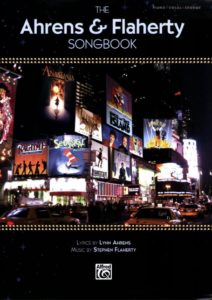 |
|
| The Alan Parsons Project – Sirius (Musescore File).mscz | ||
| The Alchemist (Russel Watson & Lara Fabian) | ||
| The All Time Best Collection vol. 3 | The All Time Best Collection vol3.PDF | |
| The alley cat (Liberace) | ||
| The Angel (Lust, Caution OST) Alexandre Desplat | ||
| The Animals – House Of The Rising Sun | The Animals – House Of The Rising Sun | |
| The Anna Magdalena Bach Book of 1725 (Richard Jones) ABRSM |
 |
|
| The Aristocrats Blues Fuckers Guitar Tabs Pdf |
 |
|
| The Aristocrats Cocktail Umbrellas Guitar Tabs |
 |
|
| The Aristocrats And Finally Guitar Tabs |
 |
|
| The Aristocrats Bad Asteroid Guitar Tabs |
 |
|
| The Aristocrats Dance Of The Aristocrats Guitar Tabs |
 |
|
| The Aristocrats Get It Like That Guitar Tabs |
 |
|
| The Aristocrats Living The Dream Culture Clash Guitar Tabs |
 |
|
| The Aristocrats Sweaty Knockers Guitar Tabs |
 |
|
| The Art Of Blues Solos by Robben Ford (Guitar with Tablature) |
 |
The Art Of Blues Solos by Robben Ford (Guitar) |
| The Art Of Improvisation (Organ) – by T. Carl Whitmer |
 |
|
| The Art of Jazz improvisation book 1 Bob Taylor |
 |
|
| The Art of Jazz improvisation book 2 Bob Taylor |
 |
|
| The Art Of Music – Cambridge Library Collection (Book) |
 |
|
| The Art Of Partimento |
 |
|
| The Art Of Piano Fingering A New Approach To Scales And Arpeggios (Penelope Roskell) Book |
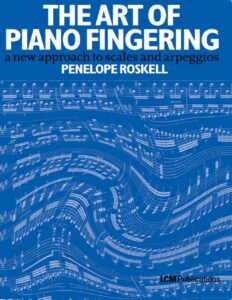 |
|
| The Art Of Piano Playing Heinrich Neuhaus Book |
 |
|
| The Art Of Piano Playing – A Scientific Approach by George Kochevitsky (1996) |
 |
|
| The Art Of Pianoforte Playing (By Ernst Pauer) (1877) |
 |
|
| The Art of Ragtime Guitar with MP3 audio tracks with Tablature |
 |
The Art of Ragtime Guitar with MP3 audio tracks sheet music pdf |
| The Art Of The Player-Piano – A Text-Book For Student And Teacher (By Sydney Grew) (1922) | ||
| The Artist At The Piano (George Woodhouse) (1910) |
 |
|
| The Augmented Scale In Jazz A Players guide for all instruments by Walt Weiskopf And Ramon Ricker |
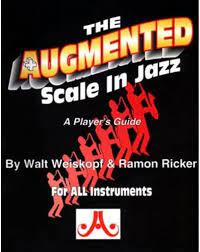 |
|
| The Authentic Guitar Style Of Harry Chapin With Tabs |
 |
The Authentic Guitar Style Of Harry Chapin With Tabs |
| The Avett Brothers Best Of The Avett Brothers Songbook |
 |
The Avett Brothers Best Of The Avett Brothers Songbook |
| The Band Music and Music From Big Pink Piano Vocal Guitar Chords |
 |
The Band Music and Music From Big Pink Piano Vocal Guitar Chords |
| The Bangles – Eternal Flame | ||
| The Beach Boys Pet Sounds |
 |
The Beach Boys Pet Sounds |
| The Beatles Beatles Collection Band Score Arr Johan De Meij |
 |
|
| The Beatles Sgt Pepper’s Lonely Hearts Club Band Guitar Tablature (13 Songs) |
 |
|
| The Beatles Songbook (Full Band Score) |
 |
|
| The Beatles Strawberry Fields Forever As Played By Andy Timmons Guitar With Tabs | The Beatles Strawberry Fields Forever As Played By Andy Timmons Guitar With Tabs | |
| The Beatles The Symphonic Beatles (Concert Band Series Conductor Score) |
 |
|
| The Beatles Basslines – Transcribed by Phil Mulford |
 |
The Beatles Basslines – Transcribed by Phil Mulford |
| The Beatles Revolver (Guitar songbook with Tablature) |
 |
The Beatles Revolver (Guitar songbook) |
| The Beatles – A Hard Days Night | ||
| The Beatles – Across The Universe Easy Solo Piano |
 |
|
| The Beatles – All Songs 1962-1974 (piano, vocal & guitar) |
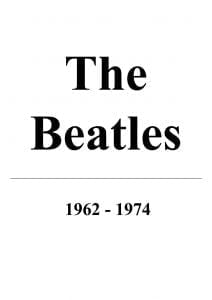 |
The The Beatles – All Songs 1962-1974 (piano-vocal) |
| The Beatles – All The Songs The Story Behind Every Beatles Release |
 |
The Beatles – All The Songs The Story Behind Every Beatles Release |
| The Beatles – BLACKBIRD Jazzy ver. | The Beatles – BLACKBIRD Jazzy ver. | |
| The Beatles – Complete Scores Full Transcriptions from the original recordings (Every Song written & recorded by The Beatles) |
 |
|
| The Beatles – Complete Songbook For Guitar, Tabs And Chords |
 |
The The Beatles – Complete Songbook For Guitar, Tabs And Chords |
| The Beatles – Eight Days A Week | ||
| The Beatles – Eleanor Rigby | ||
| The Beatles – Eleanor Rigby Concert Band Full Score Arr. by Larry Moore |
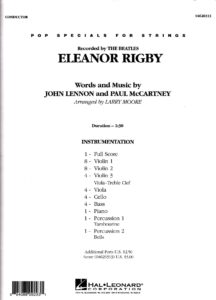 |
|
| The Beatles – Here There And Everywhere | ||
| The Beatles – Hey Jude (Piano, vocal, Guitar chords) | The Beatles hey-jude | |
| The Beatles – I Want To Hold Your Hand | ||
| The Beatles – It’s Easy To Play Beatles 1 |
 |
The Beatles – It’s Easy To Play Beatles 1 |
| The Beatles – It’s Easy To Play Beatles 2 |
 |
The Beatles – It’s Easy To Play Beatles 2 |
| The Beatles – Lady Madonna | ||
| The Beatles – Let It Be | ||
| The Beatles – Let It Be (Musescore File).mscz | ||
| The Beatles – Love Me Do | ||
| The Beatles – Michelle Guitar Tablature TABs |
 |
